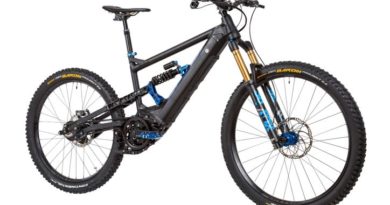Jon Iriberri: The current state of the cycling shoe market
Guest opinion by CyclingIndustry.News bikefit expert and industry insider Jon Iriberri
My interest in biomechanics in general, and in cycling in particular, has given me the opportunity to learn about (and modify, in certain cases) some of the industry construction processes of bicycle frames, saddles and shoes.
I’ve written this short analysis of some of the issues in modern cycling shoe production to help inform customers looking to purchase a new pair of shoes, and retailers looking to stock a specific range/brand of shoes, or work with a specific OEM business. There is not a great deal of credible research or investigation into this area (at least none not influenced by marketing!) so I’ve tried to maintain a certain standard of impartiality to my analysis.
The Process
One of the fundamental issues influencing quality and price of the cycling shoe is the quantity of human labour involved in producing the product. Cycling shoe production is still normally a mixture of human effort and automated machining. The human element is expensive, but still cheaper than long-term investment required to create machines capable of handling that human element.
In general, the cheaper the shoe, the less human labour involved in creating it. The difficulties in cycling shoe choice arise mainly in the medium high price range. Some shoes at this price point are justified in their pricing because of the high cost of quality material and craftsmanship. Others are still using sub-standard materials and automated production practices, but spending a lot on marketing an inferior product!
In general, at this price point it seems to be that as marketing spend rises, product quality declines. For example, you can produce a cycling shoe for less than 10 Euros, or you can produce it for 120 Euros depending on the material quality and production process. But the minimum market price hovers around 40 Euros, and maximum price around 400 Euros. So the difference in margin of some shoes of equal standard can be huge, and many quality shoes do not get sold because they cannot, or will not, spend their profits on marketing. Obviously this economic phenomenon becomes even more serious for smaller retailers- who can’t produce the volume required to offset the tiny profit for each pair.
The Outsole
Going from the cheapest to more expensive ones, below:
Plastic Polymers/Resins/Fibres
It’s the perfect cheap solution, that gives some rigidity with not excessive weight. The main problem is material fatigue; as they get older they lose rigidity really quickly. I only recommend these kind of shoes for occasional riders, as the more regular the use, the faster the decline in stiffness. For a pair of plastic outsole shoes, I wouldn’t recommend paying more than 100-120 Euros as absolute max, as production costs are very low. You’re just paying for a marketing campaign.
Injected Carbon
The outsole is done in a mould like plastic soles, above, but the composition and injection process is different. It’s the medium performance/cost solution. Much more durable than just plastic, but not as expensive as processed carbon fiber. Stiffness is generally good and durability is far better than a solely plastic/polymer outsole. Normally, these are also lighter and thinner than plastic outsoles – which is a good way of telling what outsole you have. My maximum price recommendation: 200-220 Euros.
Carbon Fibre
As a material, carbon fibre is not especially expensive – it’s the inlay, cooking and washing out of the sole which explains the price difference to the two outsole varieties above.
Carbon fibre is perfect for cycling shoes as it’s light, stiff and in some cases is moldable to provide an even more precise fit. It is the Gold Standard for producing shoes for rigid-sole sports (but that may change with the introduction of graphene in future).
It is rare to find a genuine carbon fibre shoe for under about 250 Euros (maybe in the sales, or at outlets!). Theoretically, this shoe should be under around 225 grams in total. I say this because a number of manufacturers have been guilty of using carbon fiber stickers to hide a much cheaper injected carbon (see above) outsole. In my opinion, this is unacceptable, but so many are unaware of this practice that there has been no major outcry about it!
Inner Sole
Commonly used materials are plastic or compressed cotton. Both are signs of a money-saving strategy by the manufacturer. Injected carbon or genuine carbon fibre are perfect for inner soles (as part of the outsole itself or as a double layer). If you find wooden, cotton, plastic or any of material that isn’t carbon, don’t pay more than 150 Euros for those shoes.
Uppers
In 95% of cases you are going to find microfibre uppers for cycling shoes. Leather is more adaptable to foot shape, but slightly heavier and generally the cost is higher. There is tremendous variation in microfibre quality and price between different models and suppliers. One way of knowing the distinction between cheap plastic or good quality microfiber is to look at the border of the shoe’s tongue. Here it is easier to see the quality. The more it resembles natural leather, the better. Plastic poor-quality microfiber doesn’t breathe, retains heat, and is also subject to easy wear and tear.
On the subject of manufacture, using cord to mix and fix pieces of material is a low-cost production strategy – as it allows the upper to better adapt to foot profile. Manufacturers use this strategy to save on the raw material used for the upper. They also cut ventilation holes to hide the awful heat retention of cheaper microfiber. A single one-piece upper of good quality material is much more comfortable and adaptable, and an indication of the good quality of those shoes.
Personally, I’m in love with one-piece shoes made in natural cow leather because they are breathable and more comfortable than any expensive microfibre. I’m lucky, though, in that I’m a fair weather cyclist who lives in Spain, so can avoid using them regularly in rain, which isn’t kind to natural leather.
Closures
I’ll not say much here as I think personal opinion and use is maybe more important than construction criteria for shoe closures. Wheel closures (Boa, a top,) are often an indicator of the more expensive shoes today in most brands. This can easily mislead customers who go for a low-quality shoe (see above for pointers!) just because it has Boa closures, thinking this is a sure-fire sign of quality.
In reality, we are talking about one design element that is not very important as the ones mentioned above and has little effect on shoe cost. Don’t make the mistaken consumer equation that wheel closure = better shoe, as this is often not the case. You can actually find shoes with wheel closures for under 100 Euros thanks to very low-quality material/production.
In my opinion, Micrometrics, famous 10 years ago, normally retain the foot in the shoe better than wheel closures in muddy or wet conditions, so take note all you winter warriors and ‘crossers.
Traditional laces and velcro are difficult to adjust while riding in competition, so have largely fallen out of fashion.
Conclusion
As often happens in our modern consumer lifestyle we focus on colours, profiles and marketing input to the detriment of the actual quality of the products we lust after. Cycling shoes are an extremely important and delicate purchase as foot pain or discomfort has such an overwhelming impact on power production, injury avoidance, enjoyment and performance.
Bearing this in mind, it’s interesting to consider that, as cyclists, we regularly spend more than double the money on a pair of cycling shoes over regular/walking shoes, but use them far less often. I hope that this little guide may influence your next purchase or stocking decision and help you to avoid making a completely blind acquisition!
To read more of Jon’s insight into the bikefitting and much more, click here.



